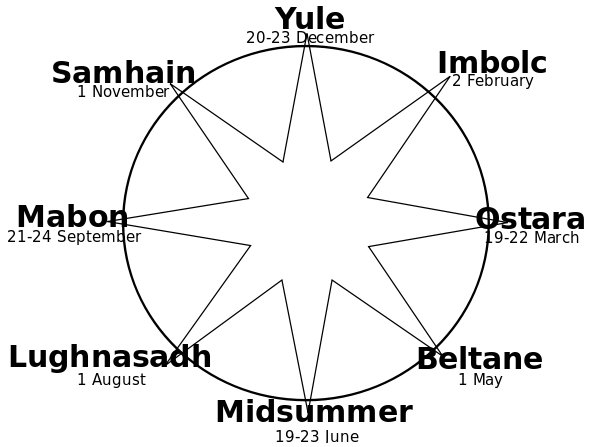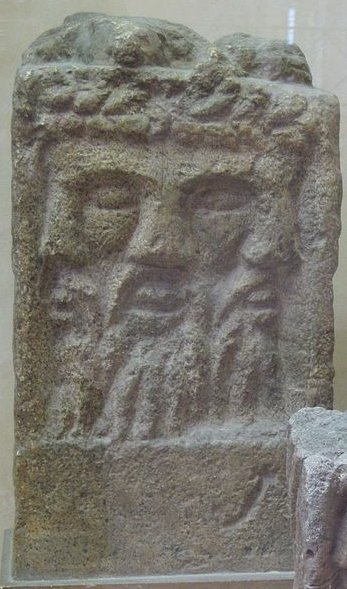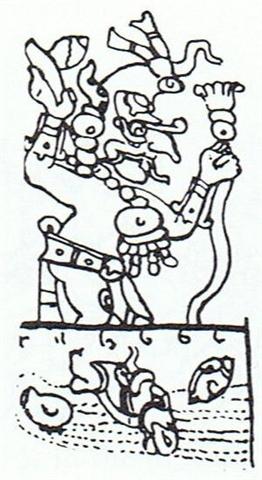In the north, once upon a time, they named the sky region with Aquarius and Pisces the 'Water', and in the Babylonian structure there was a Cargo Boat where the Milky Way rose up from the ecliptic to cross the sky and then to descend again towards the Great Twins:  Since then precession has moved the
constellation figures
clockwise, but Gemini is
still the sign for where the
Milky Way returns to the
ecliptic. Nothing has
changed.
We need to assign
the heliacal star positions to the glyphs:
18 * 29½ = 531 could have been an equation which made the creator of the C text decide glyph 136 should be Ca5-31. It is not necessary to define a calendar from the positions of the solstices and the equinoxes. But if they are used, then there may be reasons for inserting additional days. For instance are there 11 days from December 21 (355) to January 1 (366). From June 21 (172) to August 5 (217) there are 45 (= 360 / 8) days:
"Lughnasadh or Lughnasa ... Irish: Lúnasa; Scottish Gaelic: Lùnastal; Manx: Luanistyn) is a Gaelic festival marking the beginning of the harvest season that was historically observed throughout Ireland, Scotland and the Isle of Man. Originally it was held on 31 July - 1 August, or approximately halfway between the summer solstice and autumn equinox. However, over time the celebrations shifted to the Sundays nearest this date. Lughnasadh is one of the four Gaelic seasonal festivals; along with Samhain, Imbolc and Beltane. It corresponds to other European harvest festivals, such as the Welsh Calan Awst and the English Lammas ...
(An altar depicting a three-faced god identified as Lugh/Lugus.) In Irish mythology, the Lughnasadh festival is said to have been begun by the god Lugh (modern spelling: Lú) as a funeral feast and athletic competition ... in commemoration of his mother (or foster-mother) Tailtiu. She was said to have died of exhaustion after clearing the plains of Ireland for agriculture ..." (Wikipedia) At the manu rere figure in Ca5-22 Metoro said only manu, a powerful Sign for Bishop Jaussen to perceive. Possibly the idea was to indicate the opposite of manu rere, i.e. not a returning 'breath of spring' but its 'flying away'. I have no star listed for August 1 and here we can see a poor bird without eye, and Metoro said e manu. At Ca5-22 we can count 52 * 2 = 104 (= 8 * 13). The star omikron is the first to rise in Ursa Major:
Perhaps Metoro saw the same bird a quarter earlier and deduced its negation (because the 2nd occurrence should negate its first occurrence):
The flickering Mira is a sign of life. ... Although an old constellation, Cetus is by no means of special interest, except as possessing the south pole of the Milky Way and the Wonderful Star, the variable Mira [ο]; and from the fact that it is a condensation point of nebulae directly across the sphere from Virgo, also noted in this respect ... 384 (approximating 13 * 29½) - 94 (the distance from Ca2-7 to Ca5-22) = 290. The fertility of mother earth is of short duration: "Beltane is mentioned in some of the earliest Irish literature and it is associated with important events in Irish mythology. It marked the beginning of summer and was when cattle were driven out to the summer pastures. Rituals were performed to protect the cattle, crops and people, and to encourage growth. Special bonfires were kindled, and their flames, smoke and ashes were deemed to have protective powers. The people and their cattle would walk around the bonfire, or between two bonfires, and sometimes leap over flames or embers. All household fires would be doused and then re-lit from the Beltane bonfire. Doors, windows, byres and the cattle themselves would be decorated with yellow May flowers, perhaps because they evoked fire. In parts of Ireland, people would make a May Bush; a thorn bush decorated with flowers, ribbons and bright shells. Holy wells were also visited, while Beltane dew was thought to bring beauty and maintain youthfulness ... Since the early 20th century it has been commonly accepted that Old Irish Beltaine is derived from a Common Celtic *belo-te(p)niâ, meaning 'bright fire'. The element *belo- might be cognate with the English word bale (as in bale-fire) meaning 'white' or 'shining'; compare Old English bael, and Lithuanian/Latvian baltas/balts, found in the name of the Baltic; in Slavic languages byelo or beloye also means 'white', as in Беларусь (White Russia or Belarus) or Бе́лое мо́ре (White Sea). A more recent etymology by Xavier Delamarre would derive it from a Common Celtic *Beltinijā, cognate with the name of the Lithuanian goddess of death Giltinė, the root of both being Proto-Indo-European *gelH- ('suffering, death') ..." (Wikipedia) The 'death' at Beltane should refer to the winter season, I think. White refers to Moon and the colours of 'the bright fire' to Sun:
From Mira (33.7) to Bright Fire (125.4) there are ca 92 days. To Regor (the Spectral Gem of Southern Skies) there are precisely 91 days. If the season of Mother Earth ends here, then we maybe should expect a season of Sea arriving in August. The Rain God seems to be up to his kness in water in his 6th station:
| |||||||||||||||||||||||||||||||||||||||||||||||||||||||||||||||||||||||||||||||||||||||||||||||||||||||||||||||||||||||||||||||||||||||||||||||||||||












